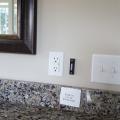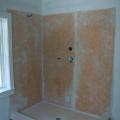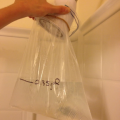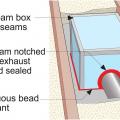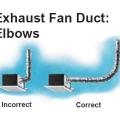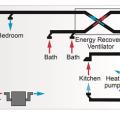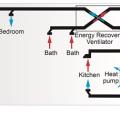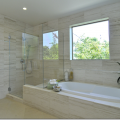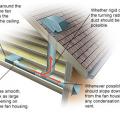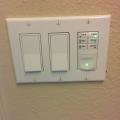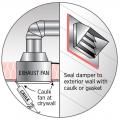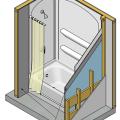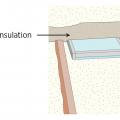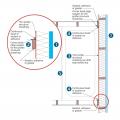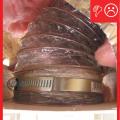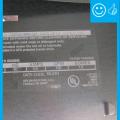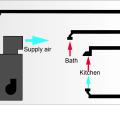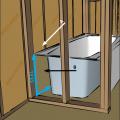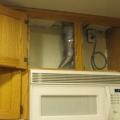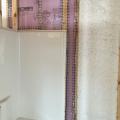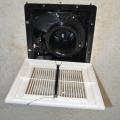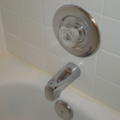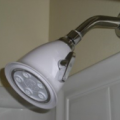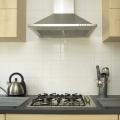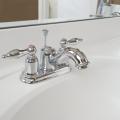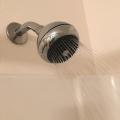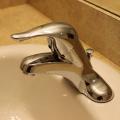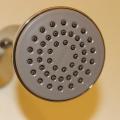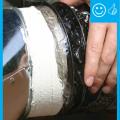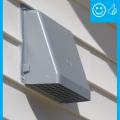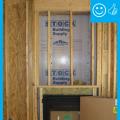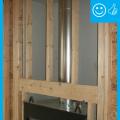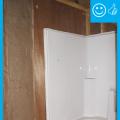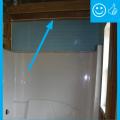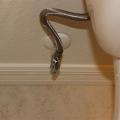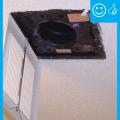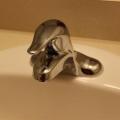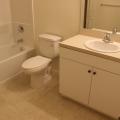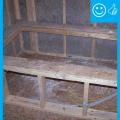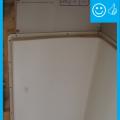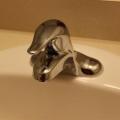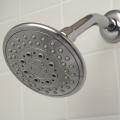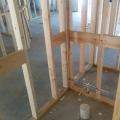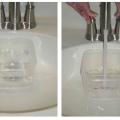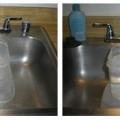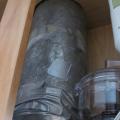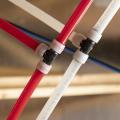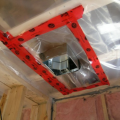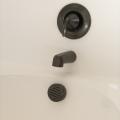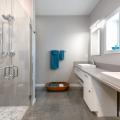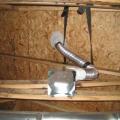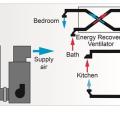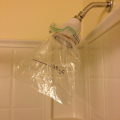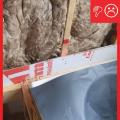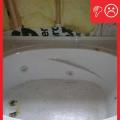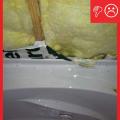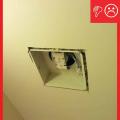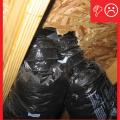Showing results 1 - 100 of 112
A push button operates the on-demand hot water circulation pump in this master bathroom.
A WaterSense-labeled showerhead is tested to ensure a flow of ≤ 0.35 gallons in a 10-second test.
Air seal and insulate around the exhaust fan with a rigid foam box
Air seal around kitchen and bathroom exhaust fans to keep conditioned air from leaking into unconditioned space.
Allow two to three feet of straight duct run from the fan exhaust port to the first elbow
An Energy Recovery Ventilator provides outside air to this dwelling unit; a range hood with dedicated makeup air provides local kitchen exhaust; a Packaged Terminal Heat Pump provides conditioned air and dehumidification is provided separately
An Energy Recovery Ventilator provides outside air to this dwelling unit; a range hood with dedicated makeup air provides local kitchen exhaust; a Packaged Terminal Heat Pump provides conditioned air
An Energy Recovery Ventilator provides outside air to this dwelling unit; a range hood with dedicated makeup air provides local kitchen exhaust; a radiant heating system provides heating
An on-demand hot water pump speeds water delivery to the low-flow plumbing fixtures for significant water and energy savings.
An outdoor shower off the master bathroom keeps heat and humidity outside for this hot-humid climate home.
Bathroom exhaust fans are timer-operated to encourage removal of moisture from the home.
Caulk or foam seal between the exhaust fan housing and the ceiling gypsum; install a gasket or caulk around the exterior exhaust duct vent
Cement board (shown in dark grey) is installed behind an installed tub and shower surround.
Draft stopping and air barrier at tub enclosure − plan view
Examples of Related Projects that Can be Done while Conducting a Roof Replacement or Bathroom Remodel
Exhaust pipe should be made of smooth, rigid duct and any bends should be gradual, not sharp
Fan CFM rating is higher than the requirement increasing the likelihood that it will meet the performance level once installed
For better temperature distribution and air quality, every bedroom and all of the common spaces in this home have ducted returns to the central heat pump and all bathroom exhaust fans are controlled by a condensation sensor and timer switch.
Hot and cold water hose connections and valves are common sources of leaks at kitchen and bathroom faucets.
In this dwelling unit ventilation configuration, a forced air system provides outside air at the same rate as the air being exhausted from the bathroom fan; local kitchen exhaust is provided by a range hood with a dedicated makeup air intake
In this ventilation configuration, an air handler provides outside air at the same rate as the air being exhausted from a bathroom fan; local kitchen exhaust has a dedicated makeup air intake; dehumidification is provided separately
Install the fan either in the range hood, the cabinet above the stove, or on the wall above the stove
Moisture-resistant rigid foam insulation was installed to provide a continuous air and thermal barrier behind the tub-shower insert.
Opening the outlet on a bath fan reveals model information and provides access to the motor
Properly install all water-using fixtures, equipment, and appliances such that there are no leaks.
Replacing your old showerhead with a new low-flow showerhead can save hundreds of gallons of water each year.
Right - The exhaust duct has been mechanically fastened and sealed with mastic.
Right - The exhaust vent duct terminates to the outdoors with a vent cover that has been properly caulked and covered with a metal pest screen.
Right – An escutcheon is installed on this toilet tank pipe to help air seal around the pipe and prevent pest entry.
Right – Blocking was installed in the walls behind the tub for installation of grab bars.
Right – EPA WaterSense-rated faucets reduce water usage compared to standard bathroom faucets.
Right – EPA WaterSense-rated low-flow showerheads reduce water and energy usage compared to standard showerheads.
Right – EPA WaterSense-rated showerheads, faucets, and toilets contribute to both water and energy savings.
Right – Fan with a cleanly cut and properly sized hole has been air sealed to drywall
Right – Moisture-resistant backing material has been used above and behind the tub enclosure.
Right – The master bathroom has a handicapped-accessible shower with curbless entry and an adjustable-height hand shower.
Right – The PEX piping and sink drain of this bathroom sink are fitted with escutcheons that help to air seal around the pipes and prevent pest entry.
Showering accounts for 1.2 trillion gallons of water per year in the United States.
Solid wood blocking was installed in the walls to accommodate future grab bars in both bathrooms.
The exhaust fan housing may have holes that allow conditioned air to leak into the attic
The gap around this kitchen exhaust duct represents a significant source of air leakage to the unconditioned attic
The pipe connections for faucets, dishwashers, garbage disposals, and other water using appliances can be a source of leaks.
The polyethylene ceiling vapor barrier is sealed to form an air barrier around the exhaust fan in this very cold climate location (≥ CZ 6).
The shower diverter in bath/shower combinations is one of the common sources of leaks in tub faucets.
The solar tube installed in the ceiling of this bathroom brings natural light into an interior room that doesn’t have window access.
This air handling unit provides outside air at the same rate as the air being exhausted from the bathroom exhaust fan; local kitchen exhaust is provided by a range hood with a dedicated makeup air intake and dehumidification is provided by a separate unit
This bathroom is handicapped accessible with a zero-entry shower and roll-up sinks.
This builder installs spray foam in exterior wall cavities where tubs and showers will be installed to air seal and insulate the exterior wall.
This home is piped with an insulated hot water recirculation loop that speeds hot water to each fixture while helping to reduce water waste.
Threaded connections are one source of leaks in showerheads and showerhead arms.
Vent the kitchen fan exhaust directly to the outside, not into an attic, crawlspace, or space between floors
Ventilation in this dwelling unit is provided by an Energy Recovery Ventilator; local kitchen exhaust is provided by a range hood with a dedicated makeup air intake; conditioned air is provided by an air handler
Ventilation in this unit is provided by an Energy Recovery Ventilator; local kitchen exhaust is provided by a range hood with a dedicated makeup air intake; conditioned air is provided by an air handler and dehumidification is provided separately
WaterSense-labeled showerheads release ≤ 0.35 gallons of water in a 10-second flow test.
Wrong - Two exhaust terminations are joined in a roughly cut, restrictive hole that is not air sealed.

